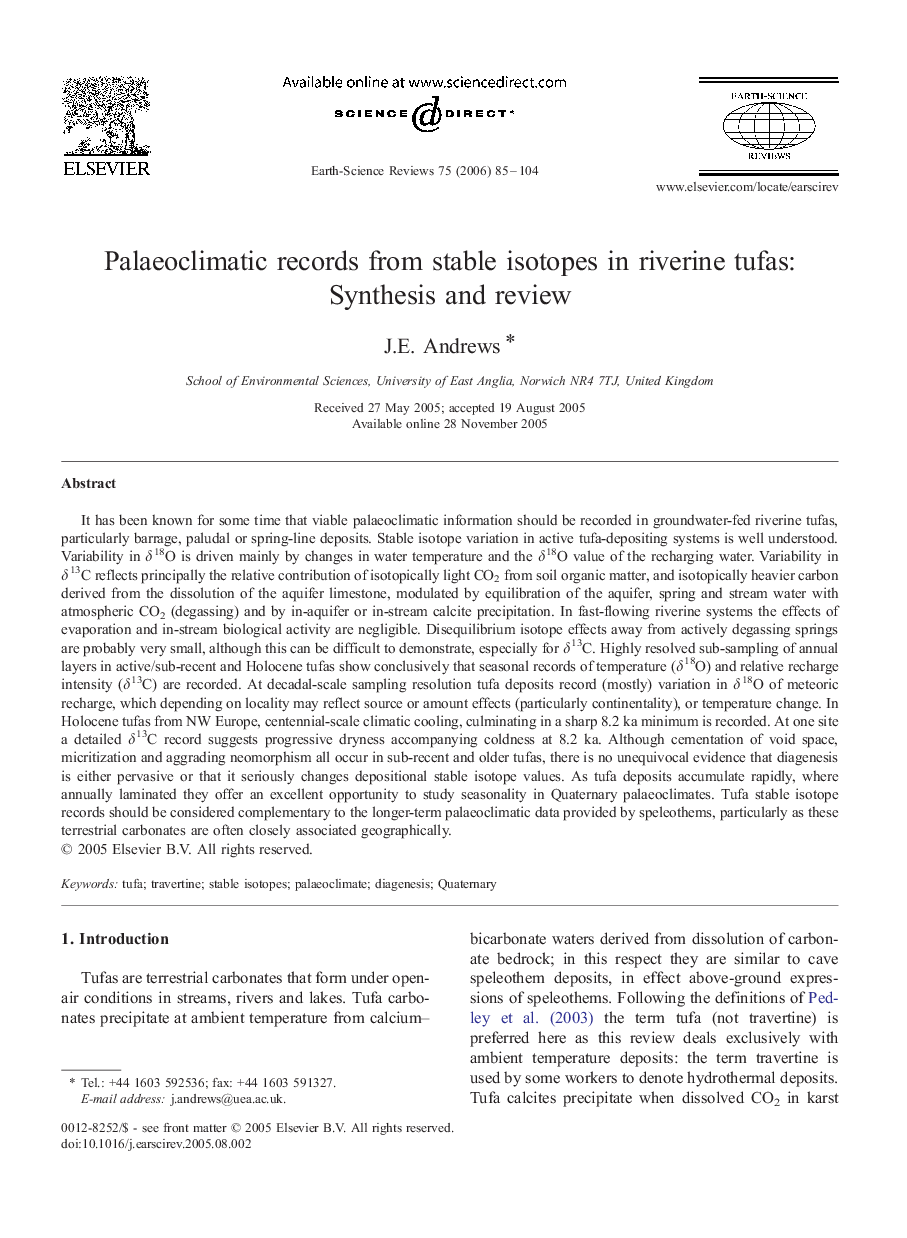| کد مقاله | کد نشریه | سال انتشار | مقاله انگلیسی | نسخه تمام متن |
|---|---|---|---|---|
| 4726487 | 1640057 | 2006 | 20 صفحه PDF | دانلود رایگان |

It has been known for some time that viable palaeoclimatic information should be recorded in groundwater-fed riverine tufas, particularly barrage, paludal or spring-line deposits. Stable isotope variation in active tufa-depositing systems is well understood. Variability in δ18O is driven mainly by changes in water temperature and the δ18O value of the recharging water. Variability in δ13C reflects principally the relative contribution of isotopically light CO2 from soil organic matter, and isotopically heavier carbon derived from the dissolution of the aquifer limestone, modulated by equilibration of the aquifer, spring and stream water with atmospheric CO2 (degassing) and by in-aquifer or in-stream calcite precipitation. In fast-flowing riverine systems the effects of evaporation and in-stream biological activity are negligible. Disequilibrium isotope effects away from actively degassing springs are probably very small, although this can be difficult to demonstrate, especially for δ13C. Highly resolved sub-sampling of annual layers in active/sub-recent and Holocene tufas show conclusively that seasonal records of temperature (δ18O) and relative recharge intensity (δ13C) are recorded. At decadal-scale sampling resolution tufa deposits record (mostly) variation in δ18O of meteoric recharge, which depending on locality may reflect source or amount effects (particularly continentality), or temperature change. In Holocene tufas from NW Europe, centennial-scale climatic cooling, culminating in a sharp 8.2 ka minimum is recorded. At one site a detailed δ13C record suggests progressive dryness accompanying coldness at 8.2 ka. Although cementation of void space, micritization and aggrading neomorphism all occur in sub-recent and older tufas, there is no unequivocal evidence that diagenesis is either pervasive or that it seriously changes depositional stable isotope values. As tufa deposits accumulate rapidly, where annually laminated they offer an excellent opportunity to study seasonality in Quaternary palaeoclimates. Tufa stable isotope records should be considered complementary to the longer-term palaeoclimatic data provided by speleothems, particularly as these terrestrial carbonates are often closely associated geographically.
Journal: Earth-Science Reviews - Volume 75, Issues 1–4, March 2006, Pages 85–104